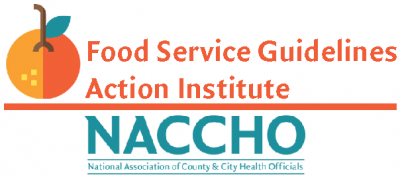Food Service Guidelines

Food and beverages are available to purchase in almost all places where people spend their days including at work, in school, at the park and other places where daily activities take place. People are increasingly purchasing and consuming food away from home as many U.S. employees have cafeterias and vending available in their workplace, and millions of Americans eat from cafeterias and concessions on a daily basis.
Food service guidelines represent a voluntary set of best practices that ensure safe, healthy food options are available. Implementing food service guidelines in community anchor institutions can increase healthy food options and make a significant impact on community health.
NACCHO, in collaboration with the Centers for Disease Control and Prevention’s (CDC) Division of Nutrition, Physical Activity and Obesity, convened subject matter experts and nine communities to attend the Food Service Guidelines (FSG) Action Institute in 2019 and 2020. The Institute helps prepare interdisciplinary teams adopt healthy food procurement policies in a variety of community-based institutions, such as universities, parks and recreation centers, juvenile detention centers, and hospitals.
The Institute provides hands on technical assistance to empower local health officials to work with decision-makers from government and community institutions that run large food service operations. The end goal is to increase fresh, healthy food options, while remaining financially viable.
For more information on food service guidelines visit the following resources:
Community Health Program
Stephanie Weiss
Director of Chronic Disease
JavaScript is required to reveal this message. / Email
